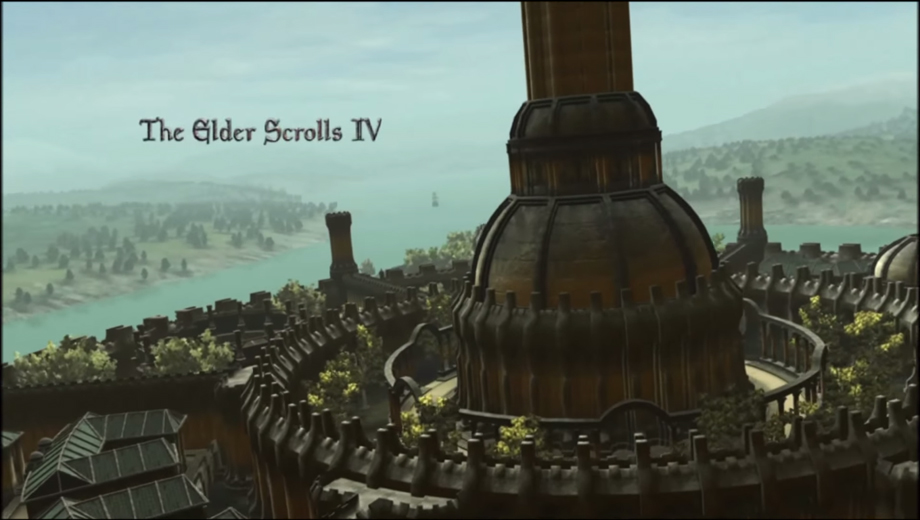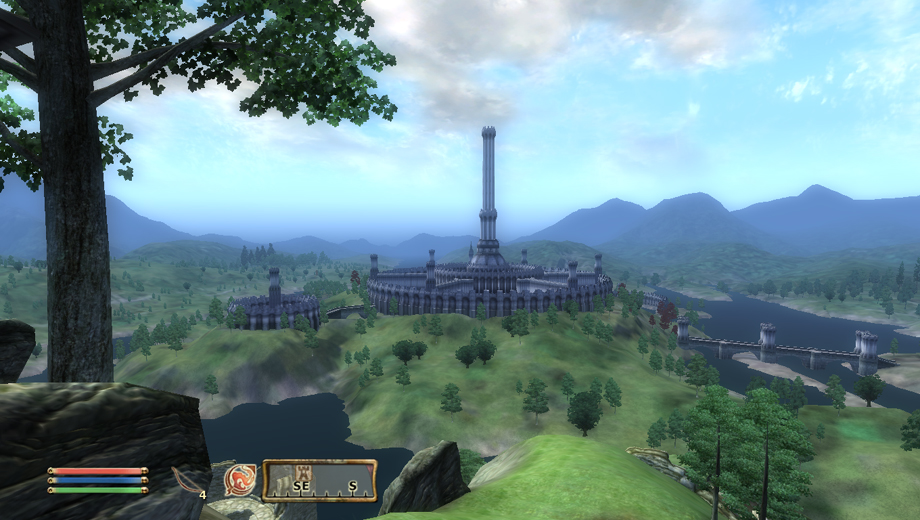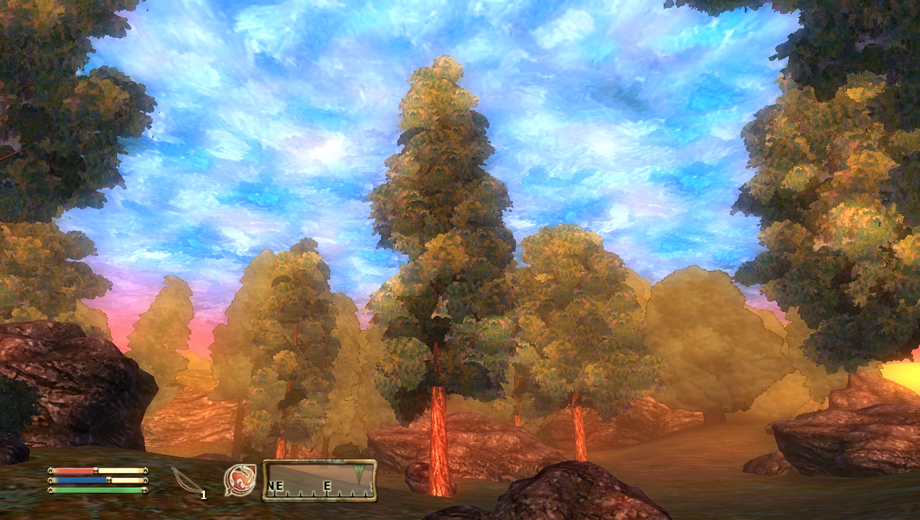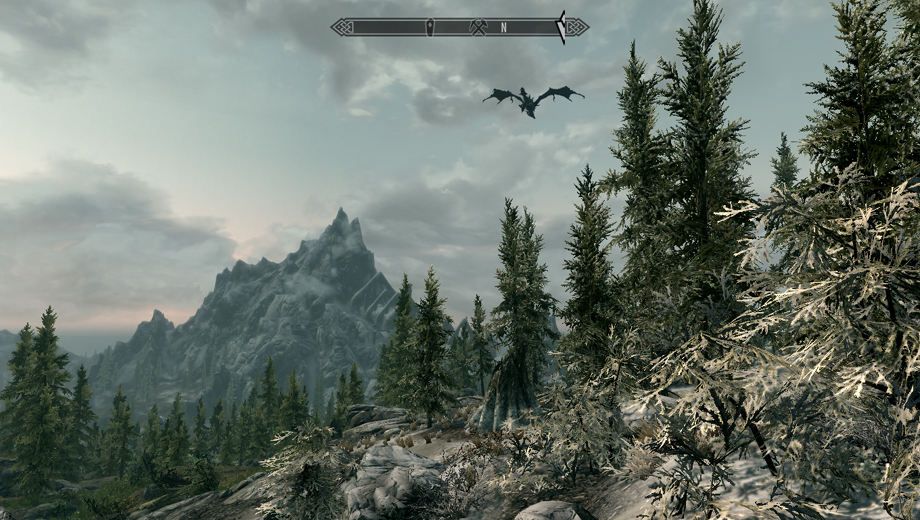|
Source: Gematsu
|
Month: April 2015
Project Ukulele is Revealed as Yooka-Laylee. Get it?
|
Source: Playtonic Games
|
New Nintendo eShop Releases: Paper Mario
In case you were wondering, the other releases this week consist of a new shmup for the 3DS and yet ANOTHER horse owning sim. Seriously. There are a ton of them now. Just do a search for "horse" on the Nintendo games pages and you'll see what I'm talking about.
Anywho, go make some paper horses, wait for your turn, and then jump past the break to see the complete list of new releases.
- Paper Mario (Nintendo 64 Virtual Console) (Nintendo, 1 player, $9.99)
3DS
- Karous - The Beast Of Re:Eden (Circle, 1 player, $6.99)
- My Horse 3D - Best Friends (Gamers Digital, 1 player, $4.99)
|
Andrew J Amideo |
Sony Spending More on PlayStation
On the hardware side, the virtual reality headset Project Morpheus will receive additional funding for research and development, further developing the product and providing support to developers. Sony also expects to increase original software available for the platform, helping them cement their position as a leader in the current generation of consoles.
Chief Financial Officer Kenichiro Yoshida forecasts a double digit expansion to the previous year's 89 billion yen investment in R&D for the fiscal year of 2015, adding that "there are some projects to be announced from now on."
|
Sources: DualShockers, Destructoid
|
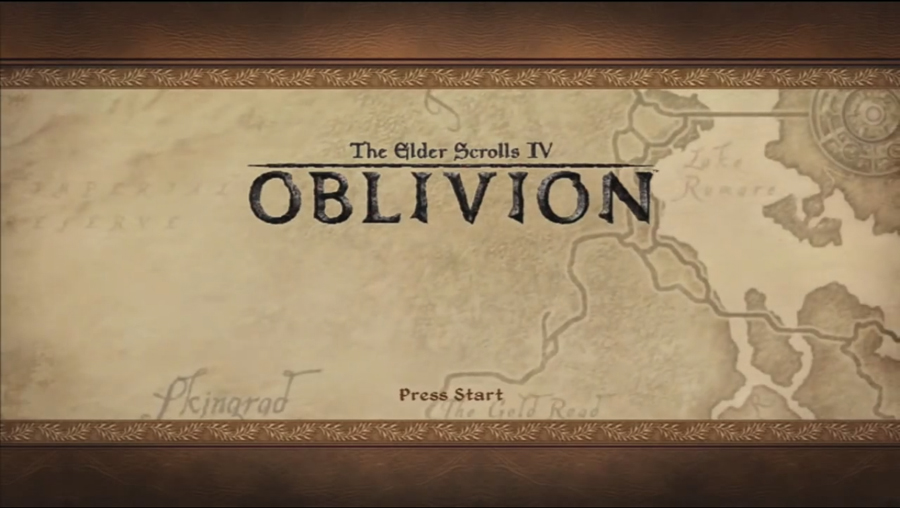
Game Changers: The Elder Scrolls IV: Oblivion
The Elder Scrolls IV: Oblivion (Xbox 360) (Bethesda Game Studios, 2006)
Game Changers is a semi-regular column featuring games which have had a significant impact on me over the years. Games that were so incredibly stunning and awe-inspiring, they changed my conception of what a game could be at the time. For the first Game Changers article, I wrote about the '80s arcade classic Out Run. It was one of the earliest games to have such a significant impact on me. This time I decided to write about something a little more recent.
Oblivion was not my first experience with the Elder Scrolls series. After hearing nothing but good things about The Elder Scrolls III: Morrowind, I went out and picked up the Game of the Year Edition for the original Xbox. I made several attempts at getting into the game, but I ultimately ended up not spending more than a few hours with it.
I enjoyed the music and lore, and a few of the design aspects, but I found the overall experience to be a bit off-putting. The graphics weren't quite as good as I was expecting for a PC port, the mechanics left something to be desired, and I found the menus and quest system to be pretty confusing. It didn't take long for frustration to set in and after that, I felt very little motivation to play it. In short, I was pretty disappointed with my purchase.
I was almost ready to write the whole series off when I started hearing information about the next game that was to come out soon on the Xbox 360. I happened to watch some development videos for Oblivion on an Official Xbox Magazine demo disc. The improvements they had made since Morrowind, as well as some of the new features they were attempting to add to the game, looked pretty incredible.
Then the game released and I saw all the high review scores it was receiving. I was almost ready to take the plunge, but I couldn't forget how burned I had felt by Morrowind. I wasn't keen on the thought of throwing away more money so I decided to give it a rental first, just to be sure.
It Begins
From pretty much the moment I popped the game disc into the tray, I was hooked. The graphics, the grand orchestral score, the intro narrative by Patrick Stewart, all of it was simply amazing. I even thought the title looked cool. The way the roman numeral IV is perfectly contained within the word "OBLIVION". I immediately thought that I was probably in for something special. I had no idea how right I was.
As in other Elder Scrolls games, you start off as a nameless prisoner. During the introductory section of the game, you are prompted to select your character's race, sex, features, skills, and attributes. Then you are on your way. The game opens in the dungeons of the capital city of Cyrodiil. The emperor, voiced by Stewart, is attempting to flee from assassins. As fate would have it, his secret escape route into the catacombs goes right through your prison cell. He stops to comment on your fateful role in the unfolding events and grants you a pardon before heading on his way.
After completing a brief tutorial section, you happen upon him again in the catacombs. The assassins make several repeated attempts on his life, but are repelled by his guards. Knowing that his luck will likely soon run out, he entrusts you with the Amulet of Kings, a powerful artifact that could decide the fate of the land. He asks you to get it into the hands of his sole remaining heir, whose existence and location are a closely guarded secret. Shortly thereafter, one of the assassins finally succeeds in killing him. You dispatch his murderer, head through the sewers, and then finally make your way out into the world. And so your journey begins.
Looking Good
Playing through the first bit of the game and then finally stepping out into the world, I was struck by just how different this game is from Morrowind. There were so many improvements implemented from that game to Oblivion that you would barely recognize them as belonging to the same series. Plot, graphics, sound, mechanics, menus, the list goes on.
Many of those improvements can be attributed to the much better hardware that Oblivion runs on, though not all. For instance, the opening of Oblivion is much more exciting and dramatic. In Morrowind, you step off of a ship and into a building, where you are asked to fill out paperwork. Yes, you get to play as a fantasy character who has to fill out paperwork. So much fun, right? In Oblivion, immediately out of the gate, you are thrust into the middle of an imperial assassination plot and entrusted with the security of the entire realm.
The graphics in Oblivion are probably the single biggest advancement since Morrowind. The level of detail, the scenery, the draw distance, the color palette, everything looks amazing. The graphics in Morrowind were okay for the time. I would describe them as occasionally nice but for the most part merely serviceable (on Xbox, anyway). The scenery was actually somewhat bland and featureless. Most of the time everything looked flat, sparse, muddy and foggy. Also, the draw distance left something to be desired.
When I exited the sewers and entered the world of Oblivion for the first time, I was blown away by what I saw. The colors, the detail, the realism of it all, it was staggering. I happened to look upward and saw the most beautiful dusk sky I had ever seen in a video game. There were oranges and blues, clouds, and tiny little stars popping out one by one. I turned all the way around and saw miles of lush tree covered hills, water, individual blades of grass, some stone structures, all surrounding me in absolutely incredible detail.
The draw distance in Oblivion was pure insanity! Up to that point, I was used to not being able to see the equivalent of about 75 - 100 yards in most games. Morrowind was no exception. Shortly after leaving the sewers and entering the world of Oblivion, I started to make my way up a nearby mountain. After dispatching a few wolves and bandits, and meeting a traveler or two, I came upon an overlook.
I strolled over to take a look down at the valley below and was awe-struck by what I saw. The view seemed to go on forever. I could see for miles, almost clear across the whole kingdom. It was just like real life! For a split second, I think I even forgot I was playing a game. It felt like I was really standing there on that mountain, looking down at the world spread out before me.
No Comparison
The menus and quest journal are way better in Oblivion. In Morrowind, I found everything to be either too overcomplicated or somewhat lacking in sufficient information. One of my only experiences with the quest system in that game was also a bit confounding. After my "playtime" filling out the requisite paperwork, I ventured outside and on down the road, hoping for some slightly more exciting gameplay. All I found instead was frustration.
After a short walk, I came across a man who appeared to be down on his luck. I stopped to talk to him and he told me about a nearby witch who had stolen all of his possessions. He asked me to eliminate her and help him get his stuff back. "Sweet!", I thought. "I'll get to take down a witch and complete my first quest!"
I must have accidentally skipped the part when he told me where to find her because I couldn't for the life of me figure it out. I tried speaking with him again and he wouldn't give me any more information. I checked all the menus and the quest journal for any kind of clue but there was nothing to be found. I then proceeded to spend the next 40 minutes scouring the surrounding area trying to find this supposed nearby witch but I ultimately couldn't find any trace of her. To make matters worse, the guy kept dying every time a stupid animal or monster attacked us.
I really wanted to see the quest through but I started to get pretty fed up with the situation. It wasn't much fun constantly having to reload my saves to keep the guy alive and searching all over that god-forsaken ugly landscape without any luck finding what I was looking for. Finally I had had enough and I just let him die. I tried to move on with the game but after the extremely boring introduction and my horrible first quest experience I quickly lost interest and stopped playing altogether.
In Oblivion, every quest has a page explicitly detailing what needs to be done in order to complete it. Furthermore, there is a very handy marker that appears on the map showing you exactly where to go. Any time I got even remotely lost or confused I just pulled up the quest journal, reread the entry for that particular task, and checked the corresponding map marker to see where I needed to go next. Whereas in Morrowind I was just totally lost and confused, in Oblivion I was an unstoppable quest completing machine. No frustrations what-so-ever.
Sunrise of Flutes
The sound design in Oblivion was absolutely brilliant. I don't have any real complaints about the sound in Morrowind but, as with the graphics, Oblivion just took it to another level entirely. Every character is voiced in the game. Every. Single. Character. That totally blew me away. It may not seem like such a big deal several years later but at the time, that was virtually unheard of for a game this size. The majority of dialogue in Morrowind was just text.
The decision to have every character speak in Oblivion really went a long way with regard to realism and immersion. The only real drawback is that Bethesda didn't hire enough voice actors to give sufficient variety to an entire world of characters. Not that they needed to bring in an army of people, but thousands of characters can't be realistically portrayed by just six or seven voice actors (unless it's The Simpsons). After playing for just a few hours, you start to realize that every new character you meet sounds exactly like dozens of others you've already come across. Despite that slight limitation, having all those voices in the game is still much better than not having them.
The music was hands down the best part of both Morrowind and Oblivion. I think it is fair to say that Jeremy Soule is one of the most talented video game composers of our time. His work on Morrowind was exceptional. And with Oblivion, he was at the very top of his game (pardon the pun). The score is variously beautiful, haunting, and foreboding. It is a joy to listen to and it fits the gameplay perfectly. I enjoyed it so much that I eventually purchased the official soundtrack off of his record website, DirectSong. That was about three or four years ago now but I still like to play it every few months or so. The opening track, Reign of the Septims can be listened to at the official Elder Scrolls website (here).
Dragonborn
After popping it in for the first time and playing through the opening, it didn't take long to realize what a brilliant game Oblivion was. I couldn't believe how significantly better it was than Morrowind. I was so excited about playing it, I went out and bought my own copy before the rental was even due back. Since that time, I've spent hundreds of hours adventuring all over (and under) Cyrodiil.
I still can't fully wrap my head around the incredible wealth of content Oblivion provides. Even the base game was huge, but then they decided to go and add some pretty substantial downloadable content on top of that. There are those who may remember the Horse Armor fiasco and still get a sour taste in their mouths. Personally, I just think about Knights of the Nine, the Shivering Isles, Thieves Den (and others) and smile. Despite the one piece of content they got wrong, they had a lot of others that they sure got right. Oblivion never got old for me as a result. I still play it today from time to time. The only one reason I no longer enjoy it as often as I used to is because it has since been (mostly) replaced by its even more improved sequel, The Elder Scrolls V: Skyrim.
Skyrim has its own advantages over Oblivion and is a better all-around game as a result (though I still prefer Oblivion's soundtrack). Despite being clearly superior, none of the improvements made from Oblivion to Skyrim were even remotely as substantial or numerous as those made from Morrowind to Oblivion. That is why no other game in the Elder Scrolls series, or the adventure/RPG genre in general, had as big an impact on me as The Elder Scrolls IV: Oblivion. In so many ways, it truly was a game changer.
Andrew J Amideo
The Twinstiq Podcast – Episode IV: A New Drama
Just like the Steam Paid Mods interviews we did, this is however now a bit out of date. But hey, since the topic surely will crop up in time, it’s still worth watching. Besides that, we also talk about a couple of other topics, like what franchise we would like to see again, what games we would like to make and what we think about Gamestop getting into the retro business.
What are you waiting for? CLICK THE DAMN PLAY BUTTON ALREADY!
Who is Going to Buy OUYA?
Will someone step up and buy OUYA, or is it more attractive to pursue an in-house Android solution for their own product? We'll report when the offers come in. Do you find the idea of an Android console compelling at all? Let us know!
|
Source: Fortune
|
VR: Where We’ve Been, and Where We Are Now
In 1962, multimedia specialist Morton Heilig built a prototype of his Sensorama, which displayed wide angle stereoscopic images, had a body tilting mechanism, stereo sound, released aromas on cue, and simulated wind. 1966 saw the introduction of a flight simulator. In the latter 1960s, an augmented reality headset was produced, although it was so heavy it had to be suspended from the ceiling. In the 1980s VPL Research introduced early goggle and glove based systems that featured a lightweight head mounted display.
Virtual Reality for entertainment purposes, specifically video games, only started appearing for consumer use in the 1990s. Sega VR was a failed attempt at bringing this technology into the home, it only made a few appearances in SegaWorld arcades.
Atari worked on a headset called the Jaguar VR. I actually tried one of these, it was running DOOM, had no real stereoscopic support, and the head tracking was awful. The prototypes were scrapped, only two units escaped destruction.
When the Wii was released, homebrew designer Johnny Lee created a software demo that tracked a head-mounted IR device, allowing players to simulate a virtual window using their television. A convincing illusion made it appear that you could see through your television into another world. Despite all of these efforts to bring VR to gamers, the holy grail of a fully immersive headset has remained out of reach due to issues we have yet to solve.
Valve game programmer Michael Abrash blogged extensively about the problems encountered trying to resolve judder. This is "a mix of smearing and strobing that can significantly reduce visual quality. The straightforward way to reduce judder is to make displays more like reality, and the obvious way to do that is to increase frame rate," Abrash writes. Another solution involves high intensity displays that will create persistent images that your brain stitches together with the next frame.
These are only some of the technical problems, some of which were already encountered with convincing 3D games displayed in 2D, such as Mirror's Edge. Developers introduced a dot in the middle of the screen, giving the player something to focus on. This greatly reduced nausea and vertigo experienced by some players. If we're already experiencing problems trying to immerse players in a game world, you can bet that the addition of a complete vision-surrounding display in stereoscopic 3D will add a lot more hurdles. Michael Abrash notes that "[not] everything about VR has been figured out, not by a long shot; there’s certainly plenty left to work out with tracking, for example, not to mention input, optics, and software."
Yesterday, through an interview with International Business Times, Chet Faliszek had this to say on the state of virtual reality games at Valve "We're at Pong level." More specifically, he states that "Just because a game genre has been around for 35 years doesn't mean it'll work with VR. How do you move around in VR? Locomotion is a real problem. Or you might find out that that genre shouldn't exist anymore. It doesn't work."
In 2016, Sony will be releasing Project Morpheus, their own VR headset for the PlayStation 4. The console will have to drive visuals at a high frame rate (120 frames per second in development kits) while rendering a full 1920x1080p image, with 960x1080 for each eye. It may be difficult to deliver the full experience we are seeing on 2D displays right now, with many games dropping in frame rates and some being locked at 30fps to deliver consistently. Developers may try to focus on more abstract representations of a world, as opposed to highly realistic scenes that many AAA games have been striving for.
Developer units have been shipped as early as June 2014, but what will games designers come up with? Will they be able to resolve the many nuanced issues that people at Oculus have been trying to perfect for so long, and also have enough time to test a fully realized experience in time for launch? Sony's Shuhei Yoshida is working hard to ensure developers have the resources to take advantage of the hardware, and I wish them the best in trying to realize for the consumer what many engineers and designers have been building towards for over a century.
Are you hyped for VR? What hardware are you putting your faith in? Do you think the games will be able to meet expectations? Please let us know your thoughts!
Poll: How Are Those New Consoles Working Out For You?
Sure, the Souls games might not look as good as the cream of the crop like The Last of Us, Witcher 2, Uncharted 3, or Halo 4. These four games were released in the latter half of the previous generation, and we're at about one and a half years in the current cycle and already seeing something as amazing as Bloodborne. I can't imagine what we'll see a couple of years from now when developers really know how to get the most out of the new hardware. What do you think?
Mighty No. 9 Has A Release Date!
20XX
Mighty No. 9 is the result of an immensely successful Kickstarter campaign from late 2013. That campaign raised nearly $4,000,000.00.
The news of the release date came with another surprise. Mighty No. 9 is getting a physical retail release (for all platforms except the PS3 and Xbox 360) via collaboration with German publisher, Deep Silver. All retail copies will come with an additional downloadable stage that, upon completion, allow players to play as Beck’s rival, Ray (all backers will also receive this content free of charge).
Now that I think about it, that date seems familiar...










